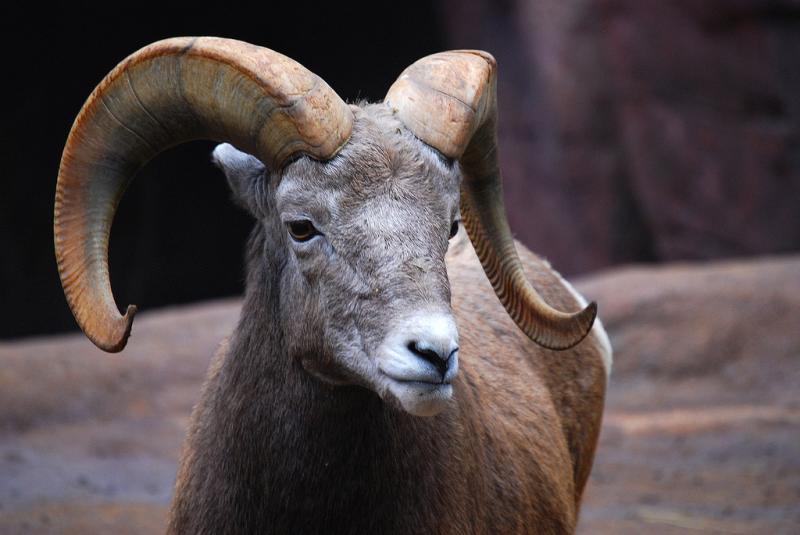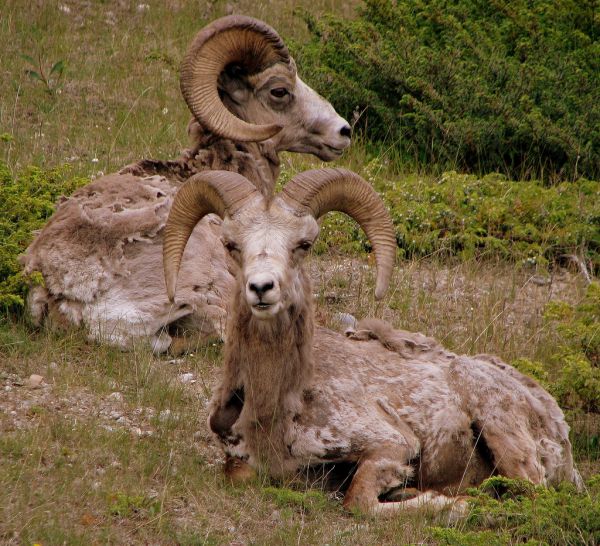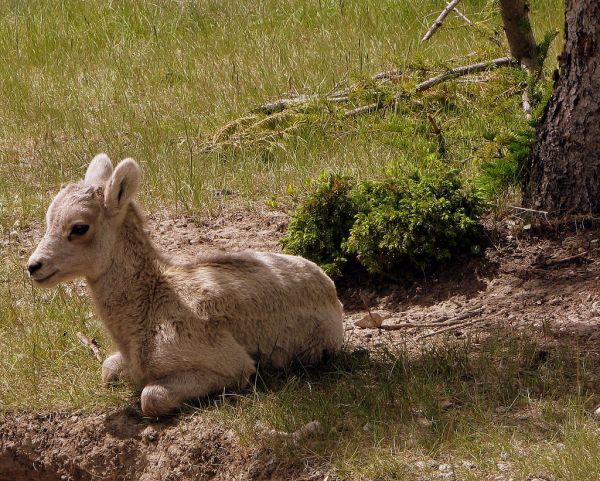Wildlife North America . com North American Animals - mamals, birds, reptiles, insects |
Bighorn Sheep (Ovis canadensis)
Bighorn sheep, Burger's Zoo Netherlands. Photograph by Marieke Kuijpers. Some rights reserved. (view image details) 
These Bighorn Sheep rams are part of the Lake Minnewanka herd, Rocky Mountains, Alberta, Canada. Photograph by James Anderson. Some rights reserved. (view image details) 
Baby Bighorn sheep, Lake Minnewanka, Rocky Mountains, Alberta. Photograph by James Anderson. Some rights reserved. (view image details)
BIGHORN SHEEP FACTS
DescriptionThe Bighorn Sheep has brown coat in summer that becomes faded by winter. The male has large broad horns that can weigh up to 14kg. The female has much smaller horns. They are found in small groups, and can form herds of up to 100 animals. They are adept climbers and can scramble up mountain slopes with ease. They are also good swimmers. Size length: males 1.6-1.8m; females are smaller growing to 1.5m Environment alpine meadows, grassy mountain slopes, mountain foothills near rocky cliffs and bluffs. Bighorn sheep live where annual snowfall is less than about 150cm a year as they cannot paw through deep snow to feed Food grasses, sedges, herbaceous plants Breeding A single young (rarely two) is born after gestation of 150-180 days. The young is weaned after 4-6 months. Range found in the Rocky Mountains from southern Canada to Colorado.There is a desert subspecies (O. c. nelsoni) that ranges from Nevada and California to west Texas and south into Mexico. Notes Bighorn rams battle each other in head-to-head combat, and these battles can go on for hours until one male concedes. They have double-layered skulls with struts of bone joining the layers to protect their heads in battle. Conservation Status LR|cd Classification
Relatives in same Genus Dall's Sheep (O. dalli) Home | Mammals | Reptiles | Birds | Insects | Privacy Policy | Disclaimer | Contact Us |